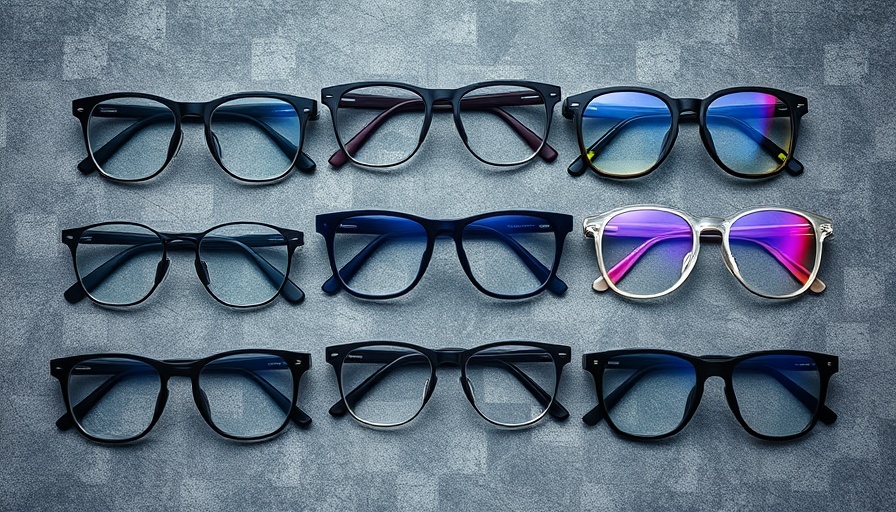
The Evolution of Smart Glasses: From Iteration to Innovation
As we approach the 2025 technological landscape, the trajectory of smart glasses—devices that have struggled to penetrate the consumer market—demonstrates a remarkable transformation. Once viewed as novelties or tools for industry specialists, this new generation of smart glasses is shedding its previous image, becoming sleek, fashionable, and, most importantly, practical. Leading companies like Meta, Snap, and the rumored efforts from Apple are not only refining design but also enhancing functionality, making smart glasses more appealing and relevant to everyday consumers.
A Fashionable Form Factor: How Design is Changing Perception
The aesthetics of technology are increasingly important in today's consumer-centric market. Meta's collaboration with Ray-Ban has resulted in smart glasses that resemble mainstream eyewear rather than an awkward gadget. Additionally, the Orion prototype offers augmented reality experiences without the bulk often associated with tech wearables. Such fashion-forward products not only attract attention but signal that smart glasses could soon escape the realm of tech enthusiasts and enter everyday conversations.
The Role of AI Agents: Enabling Smart Glasses to Become Truly Smart
The integration of artificial intelligence into smart glasses could mark a turning point for the devices. As the world witnesses significant advancements in AI, particularly in large language models (LLMs), these improvements are creating opportunities for smart glasses to evolve into more than just a wearable screen. Visionaries in augmented reality believe that these glasses could soon offer users real-time information, navigation, and even personal assistance through AI agents capable of executing tasks independently. With this functionality, smart glasses can transition from a passive information display to an active tool that enriches user experience.
Comparing Historical Successes and Failures
It’s crucial to learn from the past while looking towards the future. Google Glass was one of the first notable attempts at smart glasses, but it fell short largely due to its polarized frameworks and limited functionality paired with privacy concerns. Unlike its predecessor, the modern iterations are addressing these issues by emphasizing usability, design, and, most importantly, consumer acceptance. Innovation often stems from previous lessons learned, and as tech giants improve upon foundations laid years ago, smart glasses are finally gearing up for a successful mainstream arrival.
What's Next? Predictions for the Future of Smart Glasses
As we look ahead, industry experts anticipate that the continuing integration of AI with smart glasses will lead to a more immersive and interactive user experience. Imagine glasses providing reliable navigation, contextual information about physical objects or people around the wearer, and even virtual meetings where participants can interact in real-time without the need for bulky headsets. Furthermore, with companies like Apple expanding their innovation arms into augmented reality, we could see a significant leap that might align AR with everyday usability over the next few years.
New Perspectives on Technology Adoption
Understanding how the public interacts with new technologies often reveals insights into future market trends. Are we ready to embrace smart glasses as a commonplace item like smartphones? The answer may lie in user experience and accessibility. If smart glasses are perceived as user-friendly enhancements to our daily lives rather than intrusive devices, acceptance could follow. Education about the potential benefits and opportunities tied to smart glasses will be imperative in driving widespread adoption.
Conclusion: The Eye on the Future
Smart glasses are poised on the brink of a revolution. As they become sleeker and more packed with AI capabilities, they represent a pivotal shift in how we interact with technology. With major tech companies heavily investing in developing this sector, the future is bright, and it looks fashionable. Whether for style, utility, or both, smart glasses are stepping away from the periphery, indicating that they might soon be a staple within the tech landscape of everyday life.
 Add Row
Add Row  Add
Add 
 Add Element
Add Element 

Write A Comment